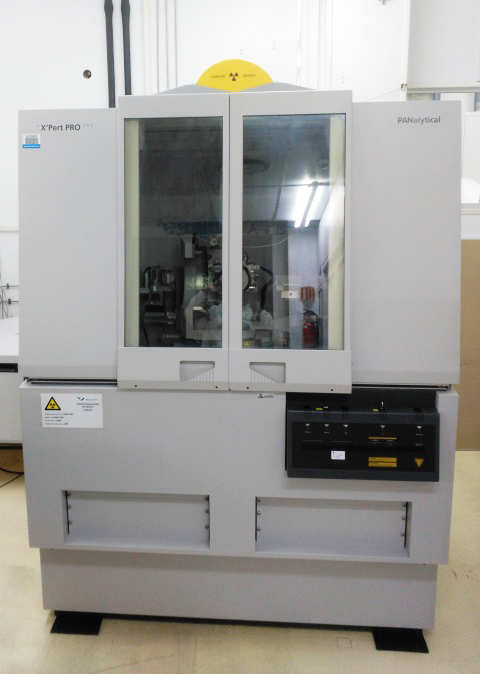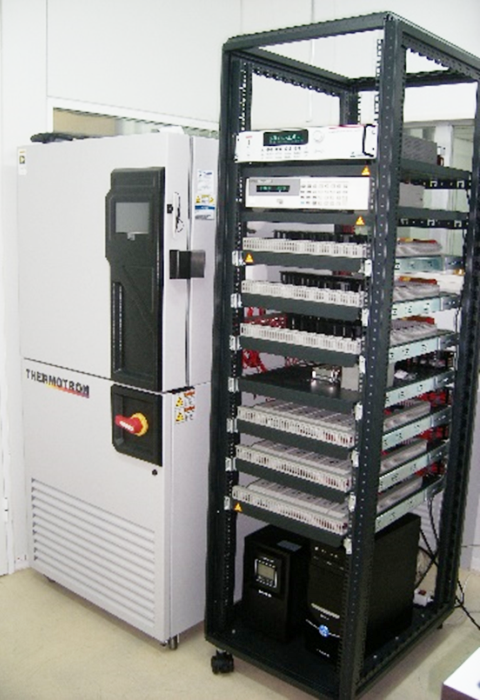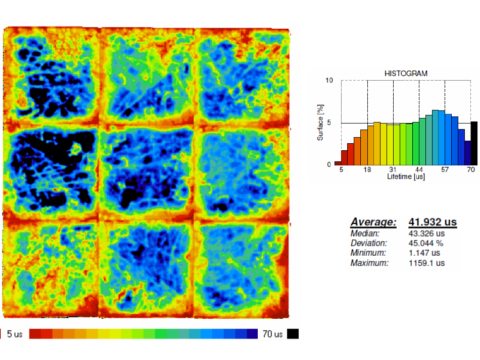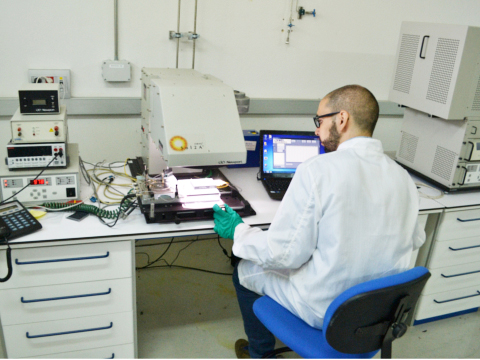1. Material and process characterization
- Inductively Coupled Photoconductance Decay lifetime tester. Sinton’s WTC-120 model. Measure of lifetime of minority carriers in p-type and n–type wafers. Sample sizes from 2” to 8”.
- Microwafe Photoconductance Decay lifetime tester. Semilab WT-2000, mapping lifetime on silicon wafers up to 8”. Also performs LBIC (Laser Beam Induced Current) measurements.
- Spectroscopic ellipsometer. HORIBA IBON JOVIN. Characterization of thin films in the 190-850nm wavelength range with 2nm resolution.
- Four point probe. Sheet resistance and resistivity of a wide range of materials.
- FTIR. Fourier Transform Infrared Spectrometer to measure the absorption or emission of light at different wavelengths.
- ThermoFischer. Measurement of the concentration of Oxygen and Carbon in Silicon.
- High Resolution X-Ray Diffractometer. 5 arc sec Ge(440) point focus module (Bartels monochromator); 19 arc sec hybrid (combination x-ray mirror + channel cut Ge(220) monochromator) line focus module; Triple axis module with triple axis detector and rocking curve detector.
2. Device characterization
- Solar Simulator ORIEL SOL2A. 1000W Xe lamp. Sample Size: Max 6 x 6".Quantum Efficiency measurements. IQE-AC-XEN-EXT1. Spectral Range: 300 - 1800nm. Sample Size: Max 6 x 6".
- I-V curve measurement system of single and multijunction solar cells under standard test conditions
- Spectral responsivity (SR) measurement system, from 300 to 1840 nm and cell sizes from 1 mm2 to 1 cm2. It is totally adapted to measure multijunction solar cells by using a combination of different LED and laser diode light sources (530 nm, 740 nm, 940 nm and 1300 nm).
- Photoluminescence and Electroluminescence Spectroscopy of III-V or other luminescent materials. PL & EL provide access to material properties such as the electronic bandgap, impurity levels and defects as well as different recombination mechanisms. Sample temperatures of 7K to 325K can be performed by placing the samples inside a Janis cryostat and using a helium compressor.
- Electroluminescence Intensity Mapping. In house developed system to measure the spatial uniformity of the light emission of a solar cell. Light emission of the cell is captured by a CCD camera and selective filters to visualize each subcell.
3. Modeling of solar cells
- 3D Distributed Model: in house developed code for SPICE Software, especially suitable to deal with different front metal grids and real operation conditions such as non-uniform illumination profiles for concentrator multijunction solar cells.
- TCAD: 2D and 3D Silvaco Software adapted for III-V single and multijunction solar cells. All semiconductor layers are simulated by using drift-diffusion and quantum models to provide higher insight into the performance of the solar cell
4. Reliability and accelerated test of III-V solar cells
- Climatic Chamber Thermotron SM-8-8200. Temperature range from -70ºC to +180ºC (-94ºF a +356ºF) and humidity control and forced convection
- Forced convection electric oven for temperature accelerated life test. Temperature control between +5ºC and 250ºC.
- On sun cell degradation. Homemade equipment able to measure light I-V curves of up to 96 cells in a module installed in our solar tracker.
|
|
 |







